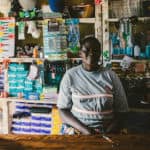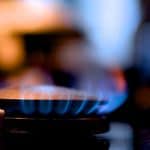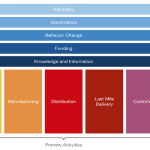The Switchback Solution: Is ‘Pay and Cook’ a Game Changer in the Movement to Popularize Cleaner Cooking Fuels?
For years, countless players in the global energy space have been trying different models to enable low-income people in emerging markets to switch from traditional fuels to clean cooking fuels like Liquefied Petroleum Gas (LPG). This goal has driven significant entrepreneurial activity in the energy space, but growth in the market for cleaner fuels has slowed down over the years.
This waning momentum is unfortunate, because traditional fuels continue to pose major adverse health effects to well over 3 billion people worldwide. These fuels also have a negative impact on the environment, contributing significantly to global warming. That’s why, in 2008, my business partner Margaret Nakigudde and I established WANA with the goal of making LPG an accessible and affordable clean cooking fuel for low-income people in Uganda.
Our customers are a hard-to-reach group whose income is as low as $8 (UGX 29,600) per day, which amounts to $240 (UGX 888,000) per month. So they often cannot afford to buy one of WANA’s $70 (UGX 260,000) standard clean cooking packages (which include a gas burner stove, cylinders, regulators, hosepipe and gas) in a single purchase. That’s why WANA set up the very first business model in the clean cooking fuels sector which combined asset financing and door-to-door delivery. This model enabled us to grow from 45 customers in 2010 to 17,000 customers in 2017.
WANA’s goal is to convince customers to take the small daily amounts they have traditionally paid for fuel like charcoal or biomass, and spend this instead on clean LPG that costs the same amount. We also eliminate travel time spent in sourcing this fuel, as we deliver LPG directly to customers’ homes. But though WANA has helped these customers to climb onto the energy ladder, we continue to deal with one core challenge: our customers’ inability to refill their fuel tanks after acquiring the initial package.
Avoiding the ‘Switchback’ to Harmful Fuels
For the past 8 years, WANA has had issues with tracking its customers, and convincing them not to switch back to traditional fuels – a tendency that has occurred frequently with our original model. In this model, first-time customers are given a full $70 package for an upfront deposit of $30 (UGX 111,000), and they pay off the rest over time. This allows them to immediately start cooking. But though this model has seen our clients increase, the numbers have not been sustainable, because clients have tended to stop using the cooking equipment as soon as they lack enough cash to pay for a gas refill (a minimum refill costs $15 (UGX 55,000)). Without access to funds for more gas, they are forced to switch back to traditional fuels.
This switchback has an effect on the health of children and women as well as deforestation – not to mention our own sustainability as a business. And the problem isn’t just ours: Other industry players report the same challenge of customers switching back to traditional fuels. So our intention is to increase our customer retention rates and avoid these high dropout rates after the initial gas supply runs out.
We have attempted to do this in different ways. There is enough evidence from our own customer data to show that making an upfront payment for a refill has the effect of sustaining customers’ continuous use of cooking gas. And initially this method worked But as time has gone on, it has become clear that it’s not a sustainable way to maximize customers’ usage of gas as a means of cooking, since high numbers of customers still switch back to traditional fuels as soon as they find themselves unable to raise money for their next refill. This realization led us to a new approach that we call “Pay and Cook (PAC).”
The Advantages of Pay and Cook
With this model, which we’re currently piloting, customers will be able to pay for gas in small amounts, the same way they pay for their traditional fuels. The customer pays a one-time down payment of $30, then commences the Pay and Cook payments, which start at as little as $0.54 per day – enough to buy 100 grams of gas, which covers their essential cooking needs. After the customer has paid off the installation cost, they continue buying cooking gas in amounts which are enough for their families.
This model is made possible by the support of two recent grants from Innovation Against Poverty and the United Nations Capital Development Fund. These two grants are enabling WANA to develop systems which give customers a way of paying small amounts of money through mobile money, as WANA manages a back-end system which tracks usage and client data. WANA monitors the gas usage as it gets depleted and delivers a new can before the previous one gets finished.
The PAC model resembles the solar Pay As You Go (PAYG) model, which has worked elsewhere in the energy industry, and it continues being a popular means of payment for low-income people who are used to paying in instalments. This approach will make accessing gas more affordable and sustainable for customers of all income levels.
Is this a viable business model?
But though the advantages to customers are clear, the question remains: Will this approach allow WANA to build a sustainable business? Here’s why we’re optimistic that it will: This business model should provide WANA both with access to new customers and an ongoing revenue stream from existing customers. By providing a flexible payment option, we hope to retain at least 75 percent of our initial clients. And this will not only create an enabling environment for our low-income customers to climb onto the energy ladder and to get continual access to gas, it will also enable them to build their creditworthiness, by demonstrating reliable payments via mobile money. This could enable them to access other energy saving products, such as pressure cookers, percolators, refrigerators and flat irons.
The PAC model will also streamline and simplify our internal processes, making WANA more efficient. By using the customer relations management system that enables us to refill depleted gas tanks promptly, WANA is in a position to record other metrics that we didn’t previously track – for example, customers’ consumption rate in relation to household members, their monthly gas expenditures, and the gender which accesses gas the most. If this approach is embraced by low-income people, we hope to see increases in our cash flows that will help grow the business by attracting further funding.
This promises to be the game-changer we’ve been looking for, in our efforts to give our customers sustainable, ongoing access to LPG as a clean cooking fuel. We believe the advantages of the PAC model will allow WANA to fulfill our goal of reaching 20 percent of the people in Uganda with clean cooking solutions by year 2020. We have high hopes that adopting this new model will be a turning point for the company, and another data point supporting the viability of small mobile payments as a means to boosting clean cooking fuel access.
Dr. Emmy Wasirwa is the chief innovations officer at WANA Energy Solutions.
Photo: WANA staff displaying one of their clean cooking packages. Photo courtesy of WANA.
- Categories
- Energy, Environment, Social Enterprise



